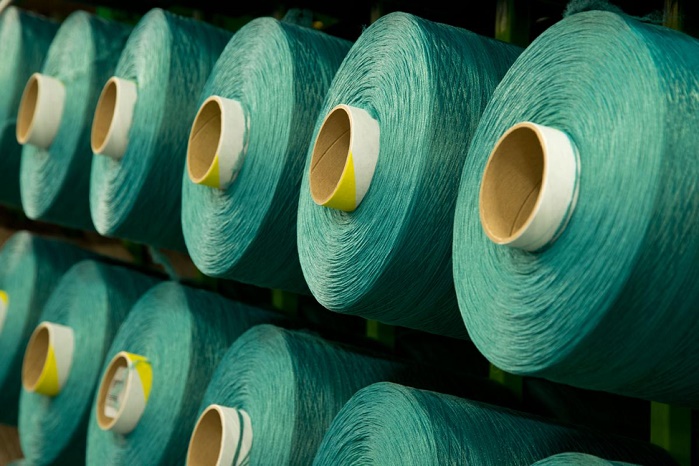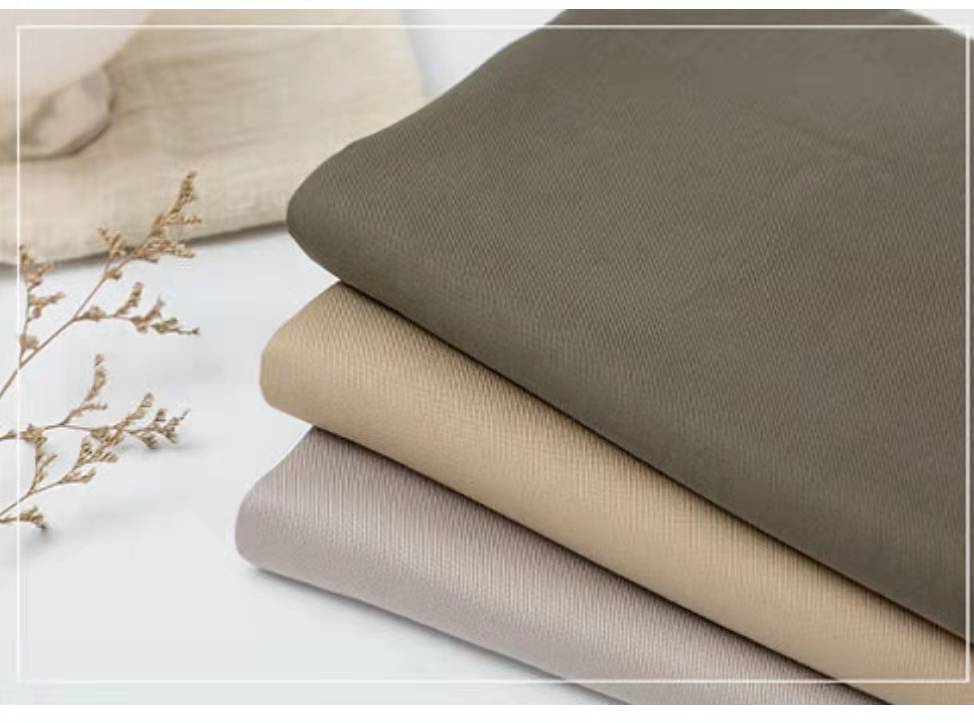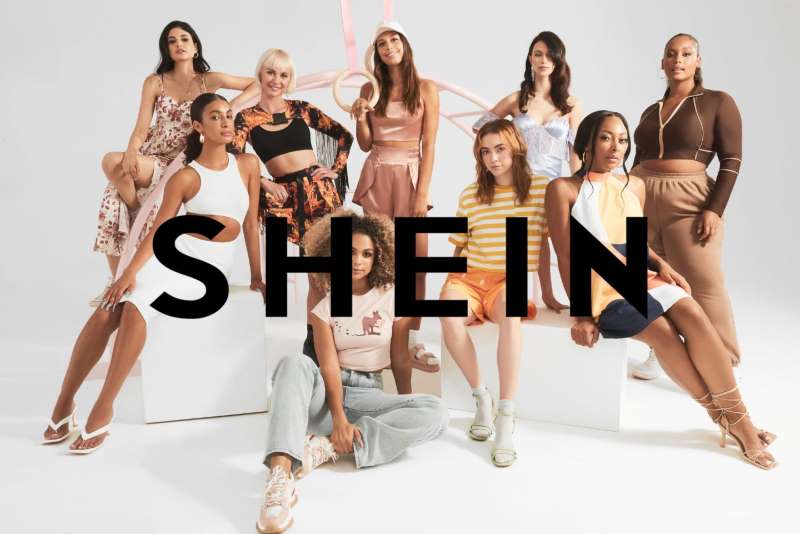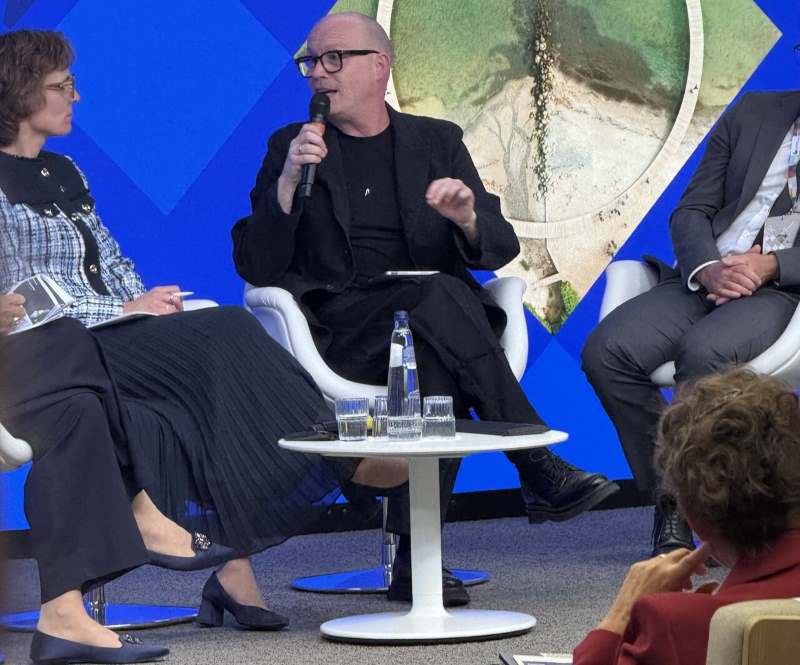FW

The $4.5 trillion global luxury market is under siege, not just from the traditional counterfeiters operating in back alleys and illicit online forums, but from a new, more sophisticated challenger: the ‘dupe’ retailer. These brands, distinct from their counterfeit counterparts by not directly copying trademarks, have built multi-billion-dollar empires. They replicate the aesthetic and quality of premium mid-market brands at a fraction of the cost. While the threat is real, an emerging ‘dupe-proof playbook’ is showing that the most successful defence is not a legal one, but one rooted in brand identity, innovation, and consumer connection.
The dupe phenomenon led by social media platforms like TikTok, where viral ‘dupe hauls’ and side-by-side comparisons flourish, is a direct response to a cultural shift. Young, aspirational consumers, particularly Gen Z, are sceptical of the high-end luxury price tag. They feel cheated by what they perceive as opaque pricing structures and are drawn to the transparency of dupe brands that break down production costs. This is not about supporting illegal counterfeits, but about a new form of everyday luxury that prioritizes value and accessibility.
How big is the dupe economy?
The financial impact of the dupe market is huge and its continuous growth is a major concern for luxury brands. According to a 2024 report, the global perfume dupes market alone was valued at $2.71 billion in 2024. This segment is projected to grow at a Compound Annual Growth Rate (CAGR) of 15.80 per cent from 2025-34, reaching an estimated $11.75 billion by 2034.
This growth is not limited to one product category. The broader illicit trade in counterfeit and pirated good, which includes dupes was estimated at $467 billion in 2021, accounting for up to 2.3 per cent of global trade. The sheer scale of this market, driven by changing consumer behaviors and technological advancements, highlights the urgency for brands to adapt.
The brands most impacted
While the super-exclusive haute couture houses and storied luxury brands like Hermès and Chanel are not immune, the dupe phenomenon impacts them differently. Their allure is built on scarcity, heritage, and unattainable price points. The real battle is being waged in the accessible luxury and mid-market segments. These are the brands that offer high-quality, long-lasting products but operate on a business model that, until now, has relied on a certain level of exclusivity and brand-led aspiration.
Luxury and premium brands most at risk are those that are product-centric rather than brand-centric these are brands whose success is tied to a single, easily replicable product or silhouette, rather than a distinctive brand story and community. When a brand's hero product like a specific cashmere sweater or a minimalist leather tote becomes a generic commodity, it's ripe for a dupe.
Brand overly reliant on a singular design motif are also at risk. While signature motifs are crucial for brand recognition, if they can be easily copied without trademark infringement, they become vulnerable. For instance, a particular weave, stitching pattern, or silhouette that is widely recognized but not legally protected can be mimicked by dupe manufacturers.
In an age where consumers are driven by values and authenticity, brands without a strong story about their craftsmanship, sustainability efforts, or founder's vision are at a disadvantage. Dupes can't replicate heritage or a brand's deep-rooted point of view.
What brands can do
The fight against dupes requires a multi-pronged approach that moves beyond traditional brand protection and legal action. It's a fundamental shift in how brands build and maintain value.
Double down on brand building and storytelling: The most effective counter-strategy is to create an identity that simply cannot be copied. This is about elevating the brand beyond the product itself.
Craft a unique point of view: Brands are moving away from simply selling a product and are instead selling a lifestyle, an ethos, and a community. This involves investing in compelling storytelling, from the sourcing of materials to the artisanal process. Brands like AYR, Bleusalt, and White + Warren are building strong identities through unique design motifs and narratives that highlight their distinct point of view.
Lean into scarcity and exclusivity: While accessibility is a goal for many, a brand can create a new form of exclusivity through limited drops, collaborations, and member-only access. This transforms the purchasing experience from a simple transaction into a special event, something a dupe can't replicate.
Innovate beyond the dupe: Rather than playing defence, some brands are using dupes as a signal for market demand and are innovating to stay ahead. They are creating dupe-proof products which involves developing proprietary materials, unique technical innovations, and design elements that are difficult and expensive to replicate. For example, Lululemon's ‘Dupe Swap’ campaign by inviting customers to trade in their dupes for an authentic pair of Align leggings, the brand showed the superior quality and value of their product, turning a threat into a marketing opportunity.
Also, when a physical product can be replicated, the experience of interacting with the brand becomes the ultimate differentiator. This includes creating immersive retail environments, personalized services, and exclusive events that a dupe brand, operating almost exclusively online, cannot offer.
While legal battles are often a game of ‘whack-a-mole’, technology offers a proactive defence. Luxury brands are increasingly using blockchain technology to create an immutable record of a product's journey from factory to customer. The Aura Blockchain Consortium, a joint effort by LVMH, Cartier, and others, is a prime example. Consumers can scan a QR code on a product to verify its authenticity, learn about its origin, and access information about its craftsmanship. Also, AI-powered tools are being used to scan e-commerce platforms and social media in real-time to detect and take down dupe listings, using coded language and visual cues that human eyes might miss.
Thus the rise of the dupe market is a wake-up call for the premium sector. It reveals that in a post-trust consumer landscape, a brand's price tag and reputation are no longer enough to justify its value. The data is clear. Consumers are more willing than ever to buy a lookalike if the original brand fails to provide a compelling reason to choose authenticity. The brands that will not only survive but thrive in this new era are those that pivot from selling products to selling an identity, an experience, and a narrative that is, by its very nature, impossible to duplicate.
A leading platform for managing the fashion supplier lifecycle, Retraced has enhanced its partnership with the Social & Labor Convergence Program (SLCP) to allow the program’s assessment data to be directly integrated into the Retraced platform.
As an official ‘Passive Accredited Host,’ Retraced can access verified assessment data through the SLCP Gateway, providing brands and suppliers with a single, reliable dataset. This eliminates the need to switch between different tools or rely on static reports, allowing companies to collaborate using a single source of credible information.
The integration embeds verified SLCP data directly into supplier profiles on the Retraced platform. This data is linked to existing compliance and sourcing workflows and can be used with corrective action planning tools (CAPA). For ESG (Environmental, Social, and Governance) and sourcing teams, this partnership reduces the burden of repetitive audits and redundant requests, enabling stakeholders to focus on long-term improvements to working conditions.
This expanded partnership marks a new phase in the collaboration between SLCP and Retraced, with the goal of providing supply chain partners with evidence-based insights to drive more efficient and strategic compliance management.
Retraced aims to make sustainability management and responsible supplier management more efficient and impactful, says Lukas Puender, CEO, Retraced. By integrating verified SLCP data into the Retraced platform, the company enables both brands and suppliers to save time, reduce duplication, and work with reliable information."
Steve Harris, COO, SLCP, adds, the company focuses on minimizing audit fatigue by simplifying the assessment process and delivering credible, actionable data, and with Retraced’s advanced data-driven platform, manufacturers and brands can seamlessly connect and share SLCP data. It hopes this collaboration will save facilities further resources on redundant audits, supporting our ultimate goal of decent working conditions in global supply chains, adds Harris.
With this new integration, SLCP assessment data can be shared with Retraced via the SLCP Gateway and automatically synced to a supplier’s profile. The system flags non-compliance issues and helps initiate the next steps for resolution. This streamlined process leads to improved performance. In the coming months, these workflows will be further enhanced with AI-assisted corrective action planning, which will suggest actions and timelines to support a collaborative follow-up.
Manufacturers are already seeing the benefits. Michael Cai, Director -Operations and Supply Chains, Décor Global, notes, wth Retraced now hosting the company’s SLCP data, they will be able to share verified insights once and feel confident that our brand partners are seeing accurate, trusted information. It will definitely save us time and help everyone focus on improving working conditions, without all the manual work."
This partnership comes at a time when global regulations, such as the EU’s Corporate Sustainability Due Diligence Directive, are increasingly scrutinizing working conditions in supply chains. The verified, shareable SLCP data in Retraced provides compliance and sourcing teams with the necessary evidence to assess risk, act proactively, and work with suppliers to make
A new strategy from ReHubs aims to break the deadlock that the Europe's textile and apparel circular economy is caught in by creating the market conditions and coordinated action needed for textile-to-textile recycling at scale.
The strategy includes a comprehensive action plan to scale textile-to-textile recycling and increase the use of recycled fibers in Europe. It was developed from over 100 interviews and surveys with industry stakeholders. It outlines a roadmap and a portfolio of projects designed to solve the supply-demand issue that has stalled progress on circular textiles.
The new strategy is built on two main pillars: end-to-end supply chain management involving streamlining fragmented processes for collection, sorting, recycling, and manufacturing to deliver a reliable supply of recycled fibers at a transparent cost and quality, and financing orchestration focusing on mobilizing and de-risking the €5–6 billion in public-private investment needed to scale infrastructure.
To support these pillars, six strategic levers will accelerate progress, including standardizing the industry, conducting research, advocating for policy, mobilizing finance and investment, and building brand coalitions. These levers will create the conditions for a reliable feedstock supply, clear standards, stronger collaboration, and growing confidence in recycled textiles as a quality, scalable solution.
By bringing together and aligning stakeholders across the value chain, ReHubs aims to recycle 2.5 million tons of textile waste by 2032, unlock €5–6 billion in investments and create up to 10,000 new jobs in Europe and position Europe as a global leader in circular textiles through scalable, demand-driven recycling solutions.
ReHubs' new strategy will be unveiled on September 22, 2025. It is supported by a community of over 30 partners, including collectors, recyclers, brands, PROs (producer responsibility organizations), technology providers, and investors.
ReHubs will also share insights from the new strategy at the Dornbirn Global Fiber Congress and Circular Textile Days, inviting the wider industry to participate in building a truly circular textile ecosystem in Europe.
With over 400 participants from 173 companies already confirmed, the Outlook Conference by Edana is positioned as a great platform for networking and business development. Only two of the 20 available exhibition spaces remain, and delegates will also have access to 23 private meeting rooms, creating an ideal setting for more focused discussions with clients and suppliers.
This year's Outlook program features 20 international speakers and two evening cocktail receptions, providing many opportunities to connect with others in the sector. The agenda includes three keynote addresses: Ambassador Ivo H Daalder will discuss shifting global alliances and their effect on international business; McKinsey & Company will share new insights into grocery retail trends and consumer behavior; and Roover Consulting will explore how artificial intelligence can be applied to innovation and product development. In addition, the conference will cover topics such as market developments, sustainability, financing, and consumer trends in absorbent hygiene products and wipes.
An international association of over 250 members, Edana advocates for the benefits of nonwovens for society. Since 1971, the association has offered a wide range of services to help the industry achieve its goals, including supporting sustainability, responsible product stewardship, and addressing technical, regulatory, and market challenges. Edana also organizes several industry events that are specific to certain applications and geographic locations.
Everlane's Fall 2025 Campaign, ‘Laufey in Everland,’ features Grammy-winning artist Laufey and is the brand's first to be led by a celebrity. This partnership marks a new creative direction for Everlane.
Partnering with Laufey for the first talent-led campaign is a natural fit for Everlane as a brand, says Alfred Chang, CEO. Her artistry, global presence, and personal story align perfectly with the brand’s values of timeless design, individuality, and cultural relevance. Her effortless style is distinctly Everlane, and through 'Laufey in Everland,' she offers a fresh perspective on the future of Clean Luxury. Better For You.
The campaign's film, ‘Laufey in Everland,’ shows a cinematic dreamscape where Laufey goes through a portal from her home into a surreal, miniature city. The story explores the connection between timeless style, musical identity, and self-expression. In the film, Laufey invites the audience to embrace their individuality while highlighting Everlane's new Fall collection, which features pieces made for life's most important moments.
Throughout the campaign, Laufey showcases key pieces from the new collection. These items reflect the brand's core values: accessibility, thoughtful materials, and cleaner luxury. As she walks through ‘Laufey in Everland’ in the Leather T-Strap Flat, her first stop is a charming farmers market, which highlights the brand's commitment to approachable style and quality craftsmanship. From a train car, she sees rolling hills with new items like the Wrap Mini Skort, reinforcing the brand's ‘better for you’ message. Other featured pieces include the Air Alpaca Short-Sleeve Cardigan, Cashmere Handkerchief, Blazer in Tailor Twill, and the Slip Skirt in Silk Charmeuse.
In addition to the campaign, Everlane and Laufey have collaborated on an exclusive capsule collection to benefit The Laufey Foundation. The collection, which will be released on September 30, 2025, includes a Crop Zip Hoody, Cropped Crew Fleece, Wide Leg Sweatpant, and Pocket Tee Shirt in multiple colors. The collection will be available in limited quantities online and in-stores.
In a recent statement, the US cotton industry praised the new report from the Make America Healthy Again (MAHA) Commission, which calls for multi-agency research into the potential human health risks of microplastics and synthetics, particularly those from textiles. The National Cotton Council (NCC) also thanked the Trump administration for collaborating with agricultural industry stakeholders while the report was being developed.
Patrick Johnson, Chairman, NCC, says, as this topic is researched further, the Commission ensures about the potential to further underscore the inherent benefits of natural fibers in the items in our daily lives, such as clothing and bedsheets.
NCC also welcomes the Environmental Protection Agency's partnership with food and agricultural stakeholders to build confidence in the EPA’s review procedures for crop protection products, Johnson adds.
Following the Retailers Association of India's (RAI) submission regarding changes to GST rates, the Legal Metrology Department has issued a notification allowing for revised Maximum Retail Prices (MRPs) to be displayed on unsold stock. The new GST rates will go into effect on September 22, 2025.
RAI, which represents 14,000 member establishments and nearly 700,000 retail stores, wrote to the Department of Legal Metrology about the recent implementation of GST 2.0. The new rates require adjustments to the MRP of many pre-packaged goods that are already in stock.
RAI is the unified voice of Indian retailers. The organization works with stakeholders to help the modern retail industry grow. RAI actively engages with all levels of government to support employment, promote retail investments, enhance consumer choice, and strengthen industry
The nova-Institute is organizing the Renewable Materials Conference from September 22-24, 2025, in Siegburg/Cologne, Germany, and online. The event will showcase pioneering solutions and innovations for replacing fossil carbon with biomass, CO₂ utilization, and recycling.
The conference will feature a high-level panel discussion on September 22, 2025, titled, ‘The Future of the Chemical Industry in Europe: Defossilised and Competitive - How Can This Work?’
The final program includes 75 presentations and speakers, 20 panel discussions, 14 interactive workshops. four in-depth articles on topics such as ‘Fossil Fuel Trap’ and ‘Global Bio-based Polymer Market,’ introductions of six nominees for the Innovation Award, over 30 exclusive booths and 21 posters
Organized by the Hong Kong Trade Development Council (HKTDC) and sponsored by the Cultural and Creative Industries Development Agency (CCIDA), Hong Kong’s premier fashion event, Centrestage closed its 10th edition on a high note.
Held on an unprecedented scale, the four-day event attracted over 260 brands from 25 countries and regions and more than 10,000 buyers from 91 countries and regions. Notably, buyer participation from the UK, Mainland China, India, and Indonesia saw a significant increase, underscoring Hong Kong’s growing influence as a fashion hub and a center for East-West cultural exchange. Concurrent fashion event, Salon de Time, also contributed to the success, with a combined total of over 19,000 public visits, helping exhibitors expand their customer base and supporting the creative sector.
Highlighting the fair’s evolution over the years, Sophia Chong, Deputy Executive Director, HKTDC, states, over the past decade, Centrestage has become an essential trade and exchange platform for local, Asian, and international fashion brands. This year’s event set new records for scale and international participation, featuring renowned brands like Saul Nash (UK), HENRIK Vibskov (Denmark), and The Nerdys (Japan) for the first time. The fair also attracted top-tier buyers from around the world, including Machine-A (UK), Zalora (Indonesia), and Daimaru Matsuzakaya Department Stores (Japan).
An optimistic outlook
Interviewing over 400 exhibitors and buyers, a survey conducted by the HKTDC during the fair, revealed a positive outlook for the industry. According to this survey, 56 per cent of respondents anticipate sales to grow in the next 12 to 24 months, with an additional 40 per cent expecting sales to remain steady. While 44 per cent respondents identified fluctuations in the global economy and 40 per cent cited intense competition as key challenges, around 38 per cent saw the greatest opportunities in the rising demand from emerging markets.
The fair showcased key trends, with fashion accessories once again identified as a major growth area. The newly launched Accessories zone was a direct response to this market demand, as 36 per cent of respondents saw accessories as having the highest growth potential.
Focus on cross-cultural craftsmanship
Featuring as the partner country for the first time, the United Kingdom presented 16 highly creative brands and emerging designers. In collaboration with the JCA-London Fashion Academy, the UK Pavilion highlighted sustainable concepts and innovative British design.
A major theme of the event was the fusion of traditional techniques with modern design. Internationally acclaimed couturier Guo Pei unveiled her entirely hand-crafted collection, ‘Gilternity: An Everlasting Radiance.’ Additionally, designers from diverse cultural backgrounds showcased works blending traditional techniques like embroidery and tie-dye. This included brands like Isabelle C from Hong Kong, which uses the Kesi silk tapestry technique, and Yu Kwa from Macao, which incorporates intangible cultural heritage in its designs.
Launchpad for emerging talent
In a show of global appeal, Danish showroom Vald Showroom and its featured brand, Henrik Vibskov, expressed excitement about exploring new Asian markets. Imellda Ho, a Hong Kong designer specializing in custom hats, praised the HKTDC for its international vision and hands-on support, which she called ‘irreplaceable’ for independent brands.
The fair also served as a launchpad for emerging talent. The Fashionally platform showcased new collections from brands like Marcch and Lapeewee, while the Redress Design Award 2025 honored sustainable fashion designers, with the championship title jointly awarded to Carla Zhang and Hugo Dumas. The event's success reaffirms Hong Kong's position as a dynamic and influential hub in the global fashion industry.

The global fashion industry is facing a sobering contradiction. Even as some of the world’s largest apparel brands proudly champion their use of recycled polyester, the material’s overall share in global production is shrinking. A new analysis reveals that virgin polyester’s relentless growth largely due to the rise of ultra-fast fashion is eclipsing the sustainability progress made by industry leaders.
Between 2019 and 2023, global polyester production grew from 57.7 million tonnes to 71.1 million tonnes, reveals Textile Exchange and Maia Research study. Yet, paradoxically, the share of recycled polyester in this growing pool fell from 13.7 per cent to 12.5 per cent. In simple terms, recycled polyester is growing, but virgin polyester is growing faster and the sustainability balance is tilting backward.
Polyester at a crossroads
Polyester remains the backbone of fashion’s supply chain, accounting for over 54 per cent of global fiber production. Its appeal is clear: affordability, versatility, and durability. However, polyester is also derived from fossil fuels, making it one of fashion’s largest contributors to global carbon emissions.
The shift toward recycled polyester (rPET), mainly sourced from post-consumer PET bottles, was seen as a milestone in reducing dependence on virgin plastics. Yet, the latest data suggests that these efforts are not keeping pace with consumption. “Recycling is no longer enough if virgin fiber growth outpaces it. Without regulatory guardrails, fast fashion will always default to the cheaper option,” says Claire Bergkamp, CEO, Textile Exchange.
Leaders vs. laggards, it’s a divided industry
While global averages paint a grim picture, some brands have shown remarkable progress. Large, established brands have embraced recycled polyester, due to consumer demand and corporate sustainability goals. Companies like Adidas, H&M, and Lululemon have been highlighted for their successful adoption rates of 99.3 per cent, 94 per cent, and 61 per cent respectively. Their commitment has spurred innovation, with new technologies like chemical recycling emerging to improve the quality and consistency of recycled fibers. For example, Indorama Ventures has partnered with other companies to use CO₂-derived materials for new polyester fibers, while others are developing methods to recycle marine waste.
However, the progress of these leaders is being undone by the massive scale and low-cost model of fast fashion. As the Apparel Impact Institute's ‘Taking Stock’ report notes, virgin polyester is cheaper to produce than its recycled counterpart. With no mandates in place to require recycled content, instant fashion players, who prioritize speed and low price, are able to ramp up their use of the cheaper virgin fibers without consequence. This creates a competitive disadvantage for brands that invest more in sustainable materials.
Table: Recycled polyester adoption by leading brands (2024)
|
Brand |
Share of recycled polyester in materials |
Important initiatives |
|
Adidas |
99.30% |
"End Plastic Waste" campaign, investments in chemical recycling and textile-to-textile recycling. |
|
H&M |
94% |
Circular Design strategy, partnership with Syre for textile-to-textile recycling, and a goal to be 100% recycled or sustainably sourced by 2030. |
|
Lululemon |
61% |
rPET-based activewear lines, investment in plant-based fibers, and a multi-year partnership with Samsara Eco for enzymatically recycled materials. |
|
Indorama Ventures (Supplier) |
N/A |
Leading global producer of rPET, with innovations including CO₂-derived polyester and marine waste recycling. |
These leaders are proving that large-scale adoption is possible, but their progress is undermined by the low-cost, high-speed fast fashion model, where the economics are starkly different. Virgin polyester remains significantly cheaper to produce than recycled alternatives, particularly in regions with low fossil fuel costs and limited regulation. This enables ultra-fast fashion players to flood the market with inexpensive garments, free from the costs of sustainability investments.
Market dynamics
While both virgin and recycled polyester markets are growing, the disparity in absolute numbers is striking. Virgin polyester will add over $50 billion in new market value by 2030, compared to only $10.6 billion for recycled polyester.
Table: Polyester market outlook
Metric 2024 Value (USD) 2030 Projected Value (USD) Source Global Polyester Fiber Market Size $77.07 billion $129.97 billion Fortune Business Insights Global Recycled Polyester Market Size $15.52 billion $26.18 billion Grand View Research
Sustainability leaders argue that voluntary commitments are insufficient in the face of an expanding fast-fashion ecosystem. Calls are growing for regulatory frameworks that would make sustainability a baseline rather than an exception.
For example, the European Union’s Strategy for Sustainable and Circular Textiles is widely regarded as a pioneering approach. The provisions include:
Mandatory Extended Producer Responsibility (EPR): Brands must finance collection, sorting, and recycling of textiles.
Eco-design rules: Setting minimum recycled content thresholds and durability requirements.
Ban on destroying unsold stock: Forcing companies to reuse, recycle, or donate unsold goods.
By shifting costs onto all market players equally, the EU hopes to eliminate the competitive disadvantage faced by sustainability leaders. “Circularity will only scale when all companies share the same obligations. Policies like EPR are critical to level the playing field,” notes Katrin Ley, Managing Director, Fashion for Good.
India’s position as an emerging player
India, one of the world’s largest polyester producers, plays a dual role in this paradox. On one hand, it houses some of the world’s largest rPET manufacturers like Reliance Industries, which has invested heavily in recycling PET bottles into textiles. On the other, its fast-growing domestic fast fashion market risks deepening the virgin polyester problem. Without policy mandates similar to the EU, Indian producers and brands may find themselves caught between global sustainability expectations and local cost pressures.
What lies ahead?
The industry now stands at a crossroads. If virgin polyester continues to outpace recycling, the environmental costs will be staggering. Polyester already accounts for nearly 32 per cent of the fashion industry’s greenhouse gas emissions, and unchecked growth could derail global decarbonization targets. However, with policy support, technological innovation, and consumer awareness, recycled polyester could become more than just a niche solution. For now, the paradox remains: progress by leaders, erased by the scale of laggards. Until systemic interventions take hold, the fabric of fashion’s future risks being woven with more fossil fuels than circular fibers.












